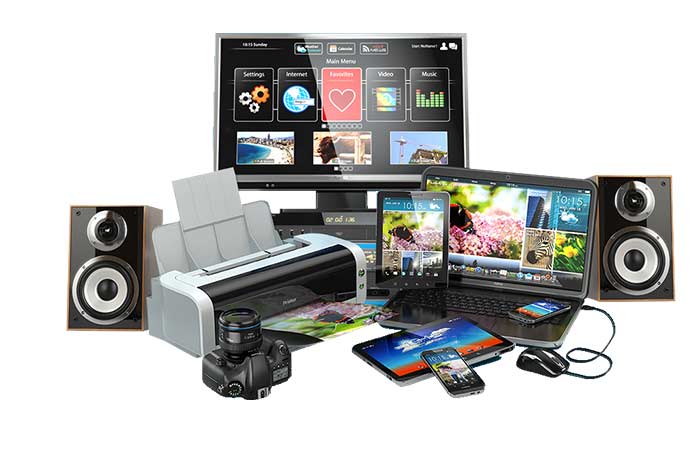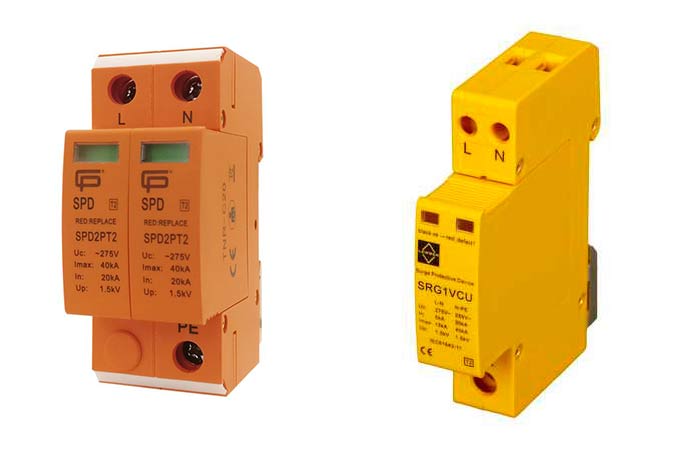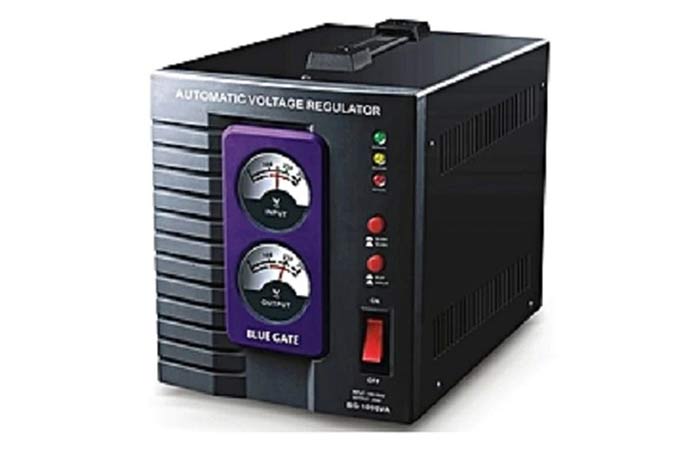Generators are meant to produce AC power of 120 volts at 60Hz. This, however, isn’t always the case as the power generation process depends on a combustion engine whose speed varies based on different factors. In the end, the power supplied isn’t always consistent and clean.
Sensitive electronics such as phones, TVs and others can be easily damaged when the power fluctuates as it is with open line generators. The harmonic distortions in power will create momentary power surges and drops which wear out electronics and can even fry their circuitries.
The solution to this is finding ways to shield electronics from these power fluctuations. There are several ways to do this as shall be detailed in the sections below. In some cases, you may need to employ more than one solution for the best experience.
Ways to protect your electronics

Some of the best ways to protect your electronics include the following:
1. Use a surge arrester
A surge arrester is a device which protects the whole house from large power surges from different sources. The surges can be from lightning, mains power or a generator. Surge arresters may not be able absorb the whole power of a surge but can manage as much as 90% of it which is enough to prevent damage to your electronics. The rest of the power surge should be handled by smaller surge protectors in devices and the power circuit.

Surge arresters are one of the most powerful devices when it comes to protecting your house from power surges. They can be quite costly given the amount of power they can take. Besides that, they need smaller surge arresters (besides the main one) to take care of any remaining power surges that occur in the circuit.
2. Use a surge protector
Surge protectors, as their name suggests, protect the electronics from power surges which occur from the harmonic distortions of a generator or power from the grid. Surge protectors detect excess voltage in the power input then redirect it to the grounding wire.

When installing surge protectors, lots of people forget plugging in the grounding wire with the result that they don’t get the protection from the surge protector at all. Always check with the manual to ensure the grounding wire is connected properly.
When you buy a new surge protector, it’ll have a specific number of joules that it can absorb over its lifetime. With each time it absorbs and sends some joules to the grounding wire, it becomes less and less effective at protecting your electronics.
Because of this, you should aim for high quality surge protectors and be replacing them frequently as well. Check for the ones with a guarantee. Besides that, remember to connect them properly to have their protection against power surges.
3. Use an Uninterruptible Power Supply (UPS)
A UPS is a device that stores power in a battery then supplies it to electronics when the power goes out. The power supplied is usually just a few minutes to allow for the proper shutdown of these devices.

You can get a large UPS device for the whole home, or you can get smaller ones that only serve one or a few devices. When looking for a good UPS for your devices, consider the following aspects:
Find one with a generator mode.
These are the best for power from generators as they help steady the power from generators besides storing some for the devices when the generator dies down abruptly.
Go for dedicated UPSs for your devices.
While it’s wise to get a UPS that covers the whole house, it’s even wiser to get one for each device. This is because some devices in the household don’t need that much power to shut off.
Fridges and freezers, for example, use up lots of power but can withstand an abrupt power blackout without getting damaged. TVs and computers, on the other hand, will need as much power as possible to be properly shut down.
If the two share the same UPS device, the fridge and freezer will use up power making it last for a shorter time at the expense of the more delicate ones like computers
Choose double-conversion UPSs.
These are like adding an inverter to a generator but with the extra benefit of a battery. They work the same way as an inverter by converting power from AC to DC then back to AC.
The resulting power is thus cleaner than the input. Besides providing power for the electronics when the input goes out, it also stabilizes out the power input making it safer for your electronics.
Just like power surge protectors, surge arresters and many others, you need to properly install a UPS with the earthing and other connections attached correctly. Besides that, you need to have the proper rating of the UPS for your appliances for the right working.
4. Use an inverter generator
If you’re yet to buy a generator, go for one with a power inverter. A power inverter is a piece of equipment that turns the AC power from the input to DC then back to AC. The AC power produced is stable and thus cleaner for your electronics. If you already have a generator that has no inverter, you can buy one and install it so that it produces stable power.

For most users, inverter generators are enough to run the electronics they want without an issue. An inverter generator is usually the best option if you’ll be running sensitive electronics. It is, however, more expensive than the open line generators. In our opinion, the extra cost is worth it.
5. Use a power line conditioner
Power line conditioners are devices that eliminate the noise in electrical power making it stable in brownouts and when the power is from open line generators. Power line conditioners eliminate many different types of noises from input power including electro-magnetic interferences (EMI), radio frequency interferences (RFI), overvoltages, power surges and others.
As such, a power line conditioner has many benefits and could be the only device you need to make a generator safe for electronics in the home and workplace.
6. Use Automatic Voltage Regulators (AVR)
Automatic Voltage Regulators are devices added to the generator to smooth out the load and RPM fluctuations with the result of generating more consistent power than a standard generator alternator would. They do this without converting the power to DC. Some generators come with these devices making them produce clean energy without necessarily being inverter generators.

With these methods, you have a great chance at making a generator safe for electronics. At times, you will need to combine these methods for the best protection for your electronics. For example, surge protectors and power line conditioners work well with UPSs for delicate electronics.
FAQS
What kind of generator is safe for electronics?
Generators with inverters and Automatic Voltage Regulators are the safest for electronics.
Will a generator harm electronics?
Not always. Inverter generators and those with Automatic Voltage Regulators will not harm your electronics. Those without devices will also not harm your electronics but the risk is higher.
Can a portable generator damage appliances?
Yes. If it’s not fitted with an inverter or Automatic Voltage Regulator, it’ll harm harmonic distortion in the power which can damage sensitive electronics.
Do generators produce dirty power?
Generators without inverters or Automatic Voltage Regulators produce dirty power that’s unstable and can be dangerous to electronic equipment.
Is it OK to run a generator without load?
Yes. Generators are engines like any other and running without a load is akin to letting a car idle without moving.
More Generator How-tos & Hacks
- Generator Won’t Start (New & Used): Causes, Troubleshooting & Fixes
- Generator Pull Cord Won’t Retract: Causes & Fixes
- How to Start a Generator: New, Used, With/Out Pull Cord
- Generator Won’t Stay Running: Causes & Fixes
- Generator Running Rough & Not Smoothly-Causes + Fixes
- How to Connect /Hook Generator to House without Transfer Switch
- How to Change Oil in Generator-Step by Step
- How to Clean Generator Air Filter & Housing
- How to Fix an Overloaded Generator
- How to make a Generator Quiet as a Cricket for Camping
- 15+ ways to Secure Portable Generators from Theft & Damage
- Portable Generators Safety Tips Checklist
